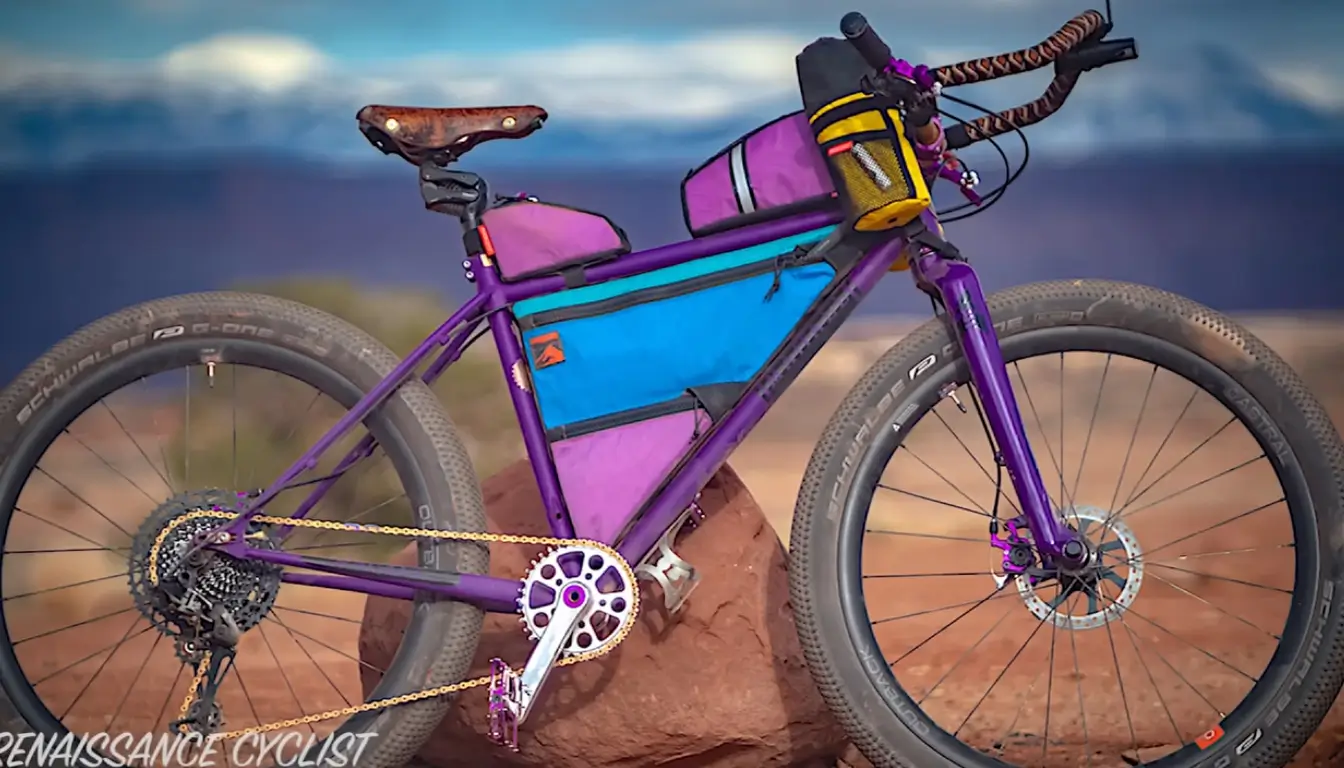Bicycle frames are stiff trust structures with little vertical compliance, as seen in my recent video about frame comfort. Most of the vertical deflection at the back of the bike is found at the rear tire seatpost and saddle. So why suspension seat posts are the ultimate comfort upgrade?
This is because most of your weight lies over the rear tire, and with a sprung saddle, you’re constantly bouncing up and down before you get off the saddle.
Today, we’ll be looking at the various options on the market and how to pick what’s best for you.
6 Reasons Why Suspension Seatposts Are the Ultimate Comfort Upgrade
If you haven’t upgraded your seatpost yet, now is the time. They’re easy to install and can improve your overall riding experience.
Here are six reasons why you should upgrade today:
Comfort
Number one, you can improve your comfort, A suspension seatpost, absorbs bigger hits as well as damping vibrations coming up from the road
Your body will experience less strain. When you ride the fresher, you’ll feel at the end of the day.
Can be Seated for Longer Time
You can stay seated for a longer time, just like riding a chair! This is particularly useful for those dealing with back and bum pains.
Much research has been published demonstrating how exercise leads to improved mental health. Now you can stay seated longer, exercise more, and improve your mental health simultaneously.
Reduce Lower Back Pain
Number three, you can reduce or alleviate lower back pain. It’s not uncommon to hear people with back injuries say they couldn’t ride a bike without a suspension Seatpost by isolating vibrations and bigger hits from your body.
Capable
They make narrow-tire bikes much more capable. A suspension Seatpost allows you to take bikes with narrower tires on rougher terrain than you normally could.
Obviously, this isn’t an ideal situation, but you’d be surprised how off-road you can go on 38-millimeter tires.
Performance
Number five. The performance isn’t height or weight-dependent. The comfort of a regular seatpost is dependent on your body weight, as well as the amount of exposure to a seatpost sticking out of your frame.
As smaller riders often have less body weight and less exposed seat posts, they have the most to gain with a suspension seatpost upgrade.
Lighter and Cheaper
They’re lighter cheaper and simpler than a full suspension bike. Rather than using a full suspension bike, you can fit a suspension seatpost to a hardtail and enjoy similar levels of comfort without the extra weight and complexity.
Reasons Not To Use a Suspension Seatpost
You can’t always use a suspension seatpost on a bicycle. Here are some reasons why you might want to refrain from using a suspension Seatpost:
- Suspension Bob
When you peddle your body movements create forces that can activate the suspension. This bob depends on the seatpost model and setup.
- Rear Suspension
Number three, you have a full-suspension bike. If your bike has rear suspension, your saddle is already suspended so you don’t need a suspension seatpost.
If you’re riding a bike with 4 to 5-inch wide tires. Those tires are likely deflecting 30 to 60 millimeters over bumps, which means that the benefits of a suspension seatpost are significantly reduced with the pros and cons out of the way.
The Role of Suspension Seatposts
There are two things you’re looking to achieve a larger amount of vertical deflection, which takes the edge off bigger hits, and a higher level of damping.
- A seatpost with more deflection will reduce the fatigue on your body as it protects you from harder jolts, like unexpected potholes or dirt road corrugated ins.
- It’ll also allow you to keep pedaling through particularly bumpy terrain damping is the speed at which the seatpost will move over repeated bumps.
- A Seatpost that dampens vibrations effectively will help to insulate you from road bars coming up through your bike.
When we measure seatpost vibrations in a laboratory setting, we find that some seatposts can absorb 15 times more vibration than others.
For example, the Thompson Elite seat post was tested by micro back laboratories to absorb just 150.0 to 5 gs of vibrations while the Ergen CF three absorbed 30.375 Gs.
The Different Damping Systems of Suspension Seatposts
So it’ll be interesting to find out whether suspension seat posts are more effective using the same test protocol, let’s now take a closer look at the different damping systems of suspension seat posts.
- Spring Damping
First, we’ve spring damping. The best way we can describe these seatposts is that they’re very springy.
The easiest way to reduce this movement is to adjust the spring preload or amount of force required to cause the saddle to start moving. It’s a smooth road.
- Elastomers
This is the result of elastomers having an inherently slower rebound speed after an impact, which is particularly beneficial while riding on fast bumpy surfaces like gravel roads, we tend to prefer the more muted feel of the analyst.
We’ve also found they require lubrication around the edges of the Alice time, although this maintenance is essentially solved with a simple seatpost cover.
- Air Damping
As the name suggests, suspension seat posts that use air damping operate like shocks on a bike.
These seat posts offer a huge range of movement and have a much more dynamic feel than elastomeric and spring-dampers.
Air-damped seatposts tend to move in both directions and bounce back very quickly so they’re particularly suited to long rides.
Different Suspension Seatpost Designs
There are many types of suspension Seatposts. Here are some of the different designs available:
- Linkage-driven
These Seatposts rotate in the same direction. This allows them to very effectively counteract and even neutralize bumps, reducing the impact forces traveling through your back and bum.
- Telescopic Post
A telescopic post is usually considered inferior as the angle it compresses is different from the direction of force coming from the rear wheel.
Telescopic posts also end up with a shorter saddle-to-pedal distance when you’re riding over bumps despite their floors.
How Do You Choose The Best Travel For You?
Rougher roads were more suspension travel as we just saw in the test. We’d say most rough roads can be comfortably cycled with just 35 mm of travel, but 50 or more may be required if you’re hitting bumps at higher speeds.
Converse if you’ve more weight on your hands because you ride in a more sporty position, you can get away with less suspension travel.
Suspension Seatpost Products
Suspension seatpost products that connect 2.1 and 3.1 are among the most active seatposts on this list, offering 35 millimeters of travel.
- The carbon model is the lightest coil-sprung seatpost. Can buy it at 470 one g.
- There is a short travel version with 30 millimeters and a long travel version with 50 millimeters of suspense.
- You can choose from five different spring rates which will suit riders all the way up to 150 kg.
- The shock stops weighs 547 g and can be used by riders up to 110 kg. The by shoes G two is a very highly rated seatpost.
- The low-cost suspension post of choice is the Sun Tour N. C. X. At under $100.
- It’s pretty heavy around 800 g and it comes with only one spring rate out of the box although softer and firmer springs are only $15.
FAQs
Are carbon Seatposts more comfortable?
Yes, suspension Seatposts are generally more comfortable than traditional or rigid Seatposts.
What benefits of suspension seatposts?
Reduce road vibration. Dampen shock to your back muscles and provide extra comfort when riding over rough roads on bumpy terrain.
How much weight do carbon handlebars save?
Depending on the model, carbon handlebars can save nearly a quarter pound.
Conclusion
Why suspension Seatposts are the ultimate comfort upgrade for your bike? They smooth out bumps in the road and make your ride much more comfortable. The Seatpost also improves the riding experience.
Without it, your bike will have less stability and bob up and down more. So if you live in an area where you encounter a lot of bumps and potholes, you’ll want to look into getting a suspension seatpost. Good luck.

I am Ryan Ford, a mountain biking enthusiast who loves to explore the outdoors. I also like to go on adventures with friends and anything else that involves being outside. I love my bike because it gets me out of the house and gives me an opportunity to enjoy nature.

